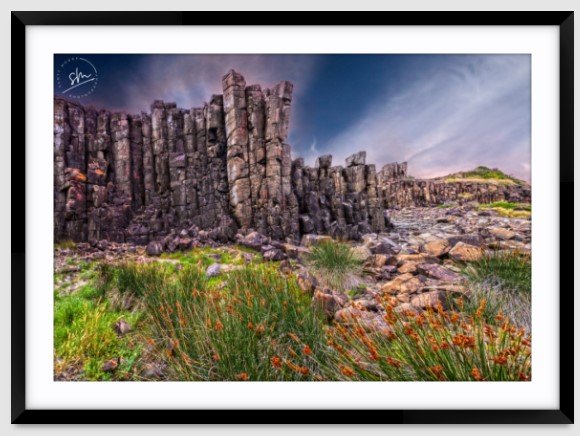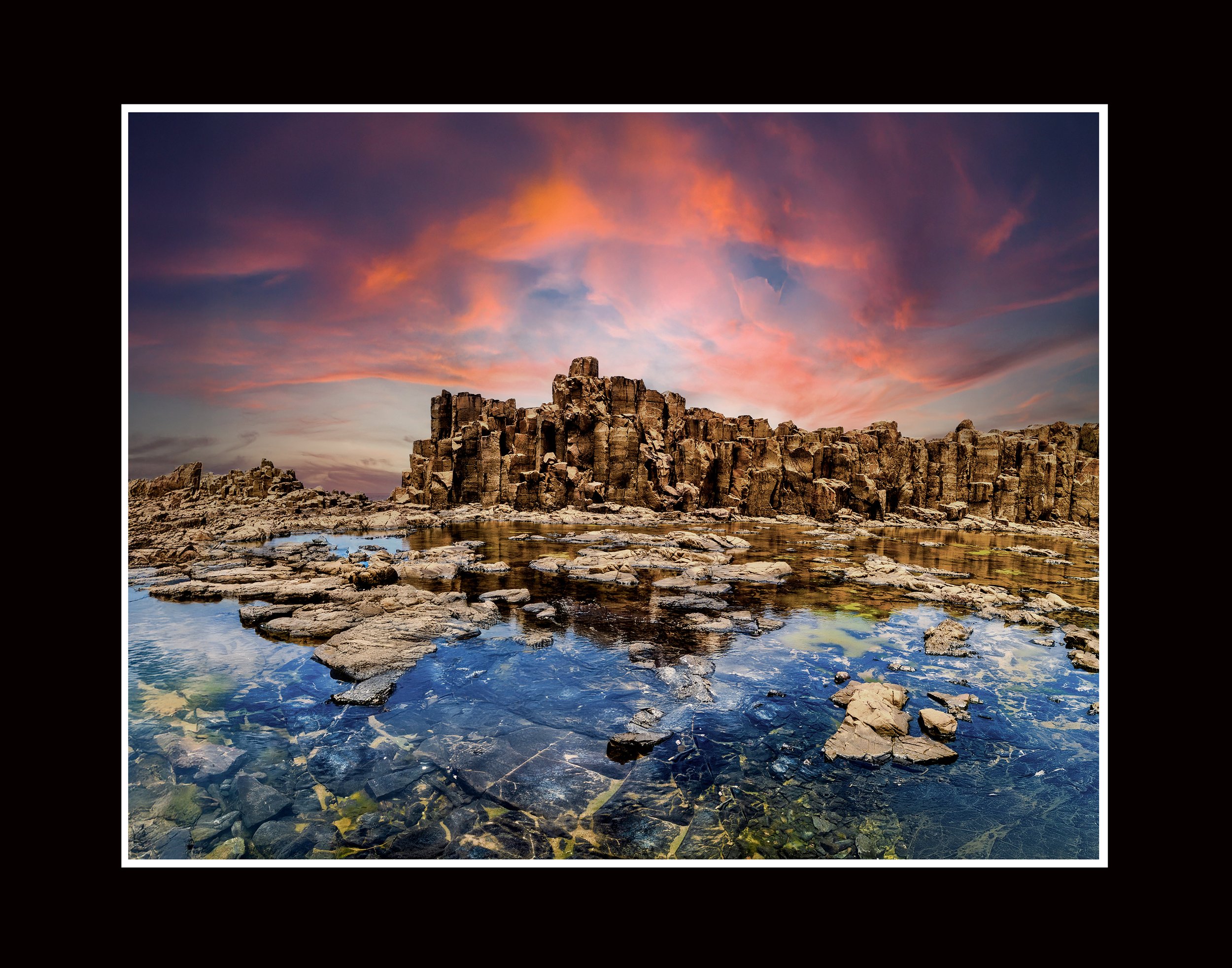 Image 1 of 2
Image 1 of 2

 Image 2 of 2
Image 2 of 2



Bombo Rocks Matte Pack
Bombo Headland, located near Kiama in New South Wales, boasts a rich environmental history shaped by both natural processes and human activity over the years. This area is characterised by its unique geological features, dramatic cliffs, and diverse ecosystems.
Prehistoric Era
The headland’s volcanic origins date back millions of years, with basalt formations resulting from ancient lava flows. These formations create stunning coastal landscapes and contribute significantly to the biodiversity of the region.
Indigenous Heritage
For thousands of years, the Indigenous people of the region, particularly the Dharawal nation, have inhabited the coastal areas around Bombo Headland. Their deep connection to the land is reflected in their cultural practices, including fishing, gathering, and storytelling that illustrates the area's natural features and resources.
European Settlement
With European settlement in the 19th century, Bombo Headland began to transform. The establishment of a quarry in the mid-1800s significantly altered the landscape, as bluish-grey basalt was extracted for construction. This important industry provided materials for significant infrastructure projects but also resulted in ecological disruption, including habitat loss for native species.
Conservation Efforts
In recent years, increased awareness of environmental issues has led to concerted conservation efforts. Various organisations and local councils monitor the area to protect its natural beauty and biodiversity. Initiatives include rehabilitating disturbed areas, restoring native vegetation, and promoting sustainable tourism practices.
Climate Impact
Climate change poses ongoing challenges, with rising sea levels and increased storm activity impacting the headland’s coastal ecosystems. Efforts are underway to assess these impacts and develop strategies to mitigate damage to the fragile coastal environment.
Present Day
Today, Bombo Headland serves as a vital refuge for coastal flora and fauna and is a popular destination for both locals and tourists. Walkers can enjoy scenic trails that showcase the stunning coastal vistas, while the unique geological formations remain a testament to the region's dynamic history. Environmental education programs also aim to raise awareness about the importance of preserving this remarkable habitat for future generations.
In summary, Bombo Headland’s environmental history reflects a journey through time, marked by natural transformation, cultural significance, and ongoing conservation efforts, ensuring it remains a cherished part of NSW’s coastal landscape.
Bombo Headland, located near Kiama in New South Wales, boasts a rich environmental history shaped by both natural processes and human activity over the years. This area is characterised by its unique geological features, dramatic cliffs, and diverse ecosystems.
Prehistoric Era
The headland’s volcanic origins date back millions of years, with basalt formations resulting from ancient lava flows. These formations create stunning coastal landscapes and contribute significantly to the biodiversity of the region.
Indigenous Heritage
For thousands of years, the Indigenous people of the region, particularly the Dharawal nation, have inhabited the coastal areas around Bombo Headland. Their deep connection to the land is reflected in their cultural practices, including fishing, gathering, and storytelling that illustrates the area's natural features and resources.
European Settlement
With European settlement in the 19th century, Bombo Headland began to transform. The establishment of a quarry in the mid-1800s significantly altered the landscape, as bluish-grey basalt was extracted for construction. This important industry provided materials for significant infrastructure projects but also resulted in ecological disruption, including habitat loss for native species.
Conservation Efforts
In recent years, increased awareness of environmental issues has led to concerted conservation efforts. Various organisations and local councils monitor the area to protect its natural beauty and biodiversity. Initiatives include rehabilitating disturbed areas, restoring native vegetation, and promoting sustainable tourism practices.
Climate Impact
Climate change poses ongoing challenges, with rising sea levels and increased storm activity impacting the headland’s coastal ecosystems. Efforts are underway to assess these impacts and develop strategies to mitigate damage to the fragile coastal environment.
Present Day
Today, Bombo Headland serves as a vital refuge for coastal flora and fauna and is a popular destination for both locals and tourists. Walkers can enjoy scenic trails that showcase the stunning coastal vistas, while the unique geological formations remain a testament to the region's dynamic history. Environmental education programs also aim to raise awareness about the importance of preserving this remarkable habitat for future generations.
In summary, Bombo Headland’s environmental history reflects a journey through time, marked by natural transformation, cultural significance, and ongoing conservation efforts, ensuring it remains a cherished part of NSW’s coastal landscape.



